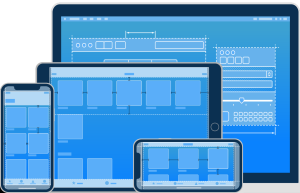
In the fast lane of logistics and transportation, every minute and every detail counts. While speed, precision and efficiency are non-negotiables, staying ahead of the curve requires companies to innovate and develop new ways to automate and streamline their operations.
Since it is a crucial aspect of the supply chain which directly affects the customer, the logistics industry requires significant planning and seamless coordination between teams to deliver value.
Furthermore, with the quick post-pandemic recovery of logistics coupled with the current wave of digitization, the industry must adapt to using Business Intelligence tools in its planning and data analytics capacities.
According to a comprehensive study by Gartner, 79% of the supply chain industry leaders have rated Advanced Business Analytics and digitization tools as crucial for their business success.
Power BI, a Business Intelligence tool by Microsoft, can transform data into meaningful insights and visualize the data in a user-friendly, real-time format. These insights can be shared seamlessly across teams and geographies and are used for informed decision-making.
In this blog, we will delve into how Power BI transforms data analysis to drive operational excellence in the logistics industry.
GOALS OF LOGISTICS OPTIMIZATION
The logistics industry strives to achieve these goals to optimize its operations:
Reduce costs of shipping, storage and transportation
Generate higher revenues through optimized operations
Minimize overstocking and wastage of goods
Improved delivery time and customer satisfaction
POWER BI AND ITS ROLE IN LOGISTICS FUNCTIONS – Power BI for Logistics
Typically, the operations in a logistics company encompass several functions. Each of these functions generates unique data. This data can be valuable if the company uses it to extract insights and make timely and informed decisions to save costs and streamline operations.
Power BI has emerged as a game changer for logistics companies worldwide. If implemented correctly, the logistics industry can experience the myriad benefits of Power BI in all stages of its operations- from order to delivery and customer ratings.
PROCUREMENT:
It includes planning, purchasing and managing supplier performance. Using Power BI, companies can analyze supplier performance, track procurement costs, and identify opportunities for cost-saving and efficiency improvements in the procurement process.
INVENTORY MANAGEMENT:
This includes ensuring optimal stock levels to meet demand. Power BI can provide real-time visibility into inventory levels, track inventory turnover rates, and identify slow-moving or overstocked items, thus helping to optimize inventory management and reduce carrying costs.
WAREHOUSING:
Efficiently managing the storage of goods is essential for the supply chain. The storage conditions should be optimal for goods – considering their nature, size or weight, and shelf-life. The warehouse team can leverage Power BI’s analytical capability to optimize warehouse layout and storage capacities, track warehouse utilization, and identify opportunities to improve efficiency in warehousing operations.
DISTRIBUTION:
Distribution begins at the supply chain immediately after the stock is produced. The goods are shipped to the retailers and distribution hubs before reaching the customer. Interactive dashboards from Power BI can help the distribution and delivery team analyze delivery routes, track delivery times, and optimize distribution networks to minimize transportation costs and improve delivery performance.
ORDER FULFILMENT:
It includes picking and packing the goods ordered by the customer, shipping and tracking the status of orders. Power BI can provide insights into order processing times, order accuracy, and fulfilment rates, helping to identify bottlenecks in the order fulfilment process and improve overall efficiency.
TRANSPORTATION:
With data analysis from Power BI, users can track transportation costs, analyze carrier performance, and optimize transportation routes to reduce shipping times and costs.
RISK MANAGEMENT (INCLUDES REVERSE LOGISTICS -RETURN OF GOODS):
Power BI can help to assess and mitigate logistics risks – including tracking and analyzing return rates, identifying the reasons for returns, and implementing strategies to reduce return rates and improve customer satisfaction.
HOW POWER BI HELPS LOGISTICS COMPANIES ACHIEVE OPERATIONAL GOALS
Here is how Power BI for logistics companies can transform data analysis and visualization and maximize operational efficiency in logistics:
COLLECTING AND PROCESSING DATA
The Power BI Desktop feature can be connected to the data source, whether Excel, SQl, or a cloud database like Azure. It then imports the data and loads it.
ASSESSING DATA IN REAL-TIME
With the connectivity of Power BI with databases like Microsoft SharePoint, SAP, Oracle, or any other database, Power BI can consolidate data from various sources and visualize it into an all-accessible dashboard. All the teams can effortlessly access the data and view updates as and when they occur, as the data keeps getting refreshed.
CUSTOMIZED DASHBOARDS AND REPORTS
As a matter of fact, different teams can have requirements for varied categories of data in a logistics company. For example, the strategic team may benefit from a different set of data metrics than the data required for an operational team. With Power BIs drag and drop filters, users can filter data fitting their requirements from the same report instead of generating a separate report each time.
EXTRACTING ACTIONABLE INSIGHTS WITH POWER BI ANALYTICS
Power BI can help its users gain insights from data for prompt and improved decision-making. For example, what are the benchmarks of a retail store or a warehouse performance? What is the estimated lead time of deliveries? What type of stock is moving fast in the delivery chain? Analytical dashboards from Power BI can help users answer all these questions. These answers help the team make more informed decisions.
TRACKING KPIS
The dashboards from Power BI can accurately track the KPIs (Key Performance Indicators) across different business verticals, delivery units or suppliers. For example, the KPIs could be – expected and actual delivery times, inventory levels and location or storage optimization.
CONSOLIDATING DATA FROM MULTIPLE SOURCES AND VISUALIZING IT
Whether the data source is an Excel, SQL, or CSV file, Power BI centralizes data from all these sources into reports and visualizes them as dashboards with interactive graphs and charts.
CONCLUSION
Many logistics companies are now harnessing the power of data to achieve operational goals of lower costs and higher revenues, with increased customer satisfaction.
Essentially, Power BI has proved to be a valuable tool for the logistics industry to utilize data for analysis and visualization in optimizing their various functions. Its capabilities in collecting and processing real-time data from diverse sources and creating customized reports can help optimize logistics through data-driven decision-making and enhanced performance.
If you are a logistics company looking to explore the benefits of Power BI consulting services for your organization or someone who would like to know more, get in touch with us – we’d be happy to hear from you.
Ready to explore Power BI data analytics solutions but haven’t decided yet to go for the full implementation right away? We understand your concerns. Schedule a call with us and let us help you decide with a free consultation.






No comment yet, add your voice below!